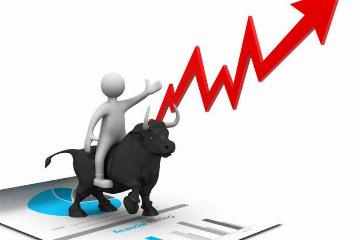In a dramatic turn of events, while many of us were fast asleep last night, the U.Sstock market experienced an astonishing reboundThe Dow Jones Industrial Average surged by an incredible 1,294 points, marking a remarkable 5.09% increaseThe Nasdaq Composite also showcased impressive gains, climbing by 385 points, or 4.49%. This sudden shift not only represented a significant reversal but also set a record for the largest one-day increase seen in the last decade!
Just a week prior, a pervasive sense of pessimism had cloaked the capital marketThe COVID-19 pandemic was accelerating its spread across the globe, particularly in South Korea, Iran, and Italy, where the number of confirmed cases surged past 1,000. By the afternoon of March 2, South Korea had reported a staggering total of 4,335 confirmed casesThe escalation of the epidemic heightened fears of downward pressure on the global economy, triggering a tempest of distress in the financial markets.
Faced with such bleak conditions, the U.S
Advertisements
market spiraled downwards, suffering a dramatic plunge with a weekly decrease of 12%, a drop that rivaled the market's most notorious downturns, including the catastrophic events of 2008. This wave of selling was not contained to the U.S.; European markets quickly followed suit, with declines spreading to the Middle East and Asia-Pacific regions, resulting in a synchronized global market downturn.
However, in a surprising twist during the final moments of trading last Friday, the markets began to stabilizeDespite opening with massive declines exceeding 1,000 points, the closing moments offered a glimmer of hopeIn the last 15 minutes, the indices flipped into the green, with Nasdaq even registering a minuscule rise of 0.01%. This unexpected turn laid a robust foundation for stabilizing the global stock markets.
The following day, as the A-share market opened, it followed a similar path with a strong upward trajectory
Advertisements
The primary indices all closed more than 3% higher, resulting in a significant bullish closeThe sentiment in the market was palpably upliftedThis was a quintessential display of the saying, "the darkest hour comes before dawn."
In the lead-up to the initial downturn, several factors contributed to the plummet of the marketsIn China, the A-share market faced a significant drop at the opening on February 3rd, with nearly all major indices approaching their daily lower limitsOver 3,000 stocks were halted at their daily limits during that falloutWhile the market attempted a rebound, a retracement became apparent around February 20th.
Interestingly, February 20 marked a crucial juncture in the global trajectory of the pandemicFollowing a spike in confirmed cases in South Korea, the numbers began to swell dramatically from that dateInitially, South Korea had struggled with fewer than 100 confirmed cases, but this figure skyrocketed to over 4,000 in just ten days
Advertisements
Coincidingly, Italy, which had reported fewer than 20 cases on February 20, saw that number explode past 2,000 within the subsequent ten days, leading to a death toll of 52. Middle Eastern nations faced a similar fate, with confirmed cases climbing from less than five to upwards of 1,500, culminating in 66 fatalities within the same period.
This outbreak trajectory established February 20 as a notable inflection point, correlating with a beginning downturn in global stock marketsA-shares were unable to maintain their rebound, slipping lower, while U.Sstocks entered a state of freefall, replete with multiple trading days experiencing declines that surpassed 3%. The extreme volatility in the U.Smarket was starkly reminiscent of its A-share counterparts, making such drastic decreases almost unprecedented.
Thus, the global spread of the pandemic emerged as a principal catalyst for plunging stock values.
Yet, what precipitated this extraordinary reversal? The A-share market, being ahead of its U.S
- Factors Influencing Energy Futures Market
- Trends in Financial Technology Development
- Trends in Capital Flows in Emerging Markets
- Meeting the Needs of Foreign Enterprises
- Applications of Supply Chain Finance
counterpart in trading, played a vital roleReports of a substantial investment plan amounting to 24 trillion yuan in infrastructure provided the necessary impetus for the market rallyReminiscent of the 2008 crisis, when a 4 trillion yuan investment plan was introduced to combat economic stagnation, this new strategy aimed to rejuvenate the economy amidst the significant pressures brought on by the pandemic.
Given that China ranks as the world’s second-largest economy, a stabilization or potential rebound there would offer considerable support to the global economyAfter all, China has consistently been the chief contributor to global economic growth.
Additionally, aside from the pandemic, the decline in U.Sstock values since February 20 was exacerbated by years of bull market momentum that necessitated a correctionHeightened calls for the Federal Reserve to lower interest rates added an extra layer of stimulation for the market
